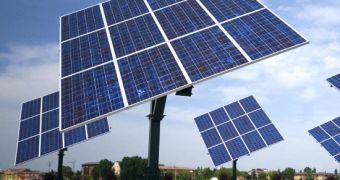Solar panel manufacturer SunPower has purchased Greenbotics, a company whose working agenda revolves around making and marketing robots that clean solar panels.
SunPower says that, should such cleaning robots start being used on a wide scale, the energy generating capacity of solar farms up and running in various parts of the world is bound to significantly up.
In time, this increase in solar farms' energy generating capacity is expected to yield financial benefits, meaning that solar power stands to get cheaper.
Speaking to members of the press, Tom Werner, the current CEO of SunPower, said that these battery-powered robots look much like a run-off-the-mill briefcase and move with the help of tank-like treads,
While traveling across the surface of a solar panel, they wipe whatever dirt and dust they come across and thus make it easier for the panel to harvest sunlight.
Once they reach the end of a row of solar panels, they can be easily picked up by workers and placed on a new row.
These robots will particularly come in handy in dry areas where dust more often than not turns out to be quite a hassle, Business Green reports.
Unlike human workers, they don't take long to clean the solar panels. More precisely, they get the job done about three times faster, the same source details.
“By having more efficient cleaning, we can increase energy output by 15 percent,” explains Tom Werner. “So having the ability to clean more frequently can make a huge difference,” he adds.
Besides making it easier to clean panels, these robots can also make a difference in terms of improving on a solar farm's ecological footprint. This is because they do not need all that much water to remove dust and dirt. On the contrary, it appears that, when compared to traditional methods of cleaning solar panels, they use about 90% less of this precious resource.

 14 DAY TRIAL //
14 DAY TRIAL //